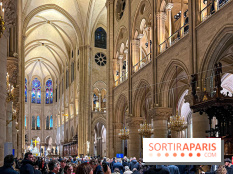The cities of Nancy and Brussels may have even more Art Nouveau creations, but the French capital is no exception! In Paris, the trend was launched with the success of the Castel Béranger and, at the 1900 Universal Exhibition, with the rise ofAlfons Mucha and his posters.
Art nouveau is characterized by ornamentation inspired by nature, trees, flowers, insects or animals, as well as arabesques. The artistic movement, which reached its peak around 1905, later evolved into Art Deco, with a more geometric style. In Paris, there are many places and buildings built during the Art Nouveau movement, which can be discovered all year round, and especially on June 10, World Art Nouveau Day.
After 16 years of closure, this Parisian department store reopened its doors in 2021, thanks to a spectacular renovation. Its style oscillates between Art Deco and Art Nouveau, with flamboyant exterior decoration by decoratorFrancis Jourdain, painter Eugène Grasset (designer of the store sign), ironworker Édouard Schenck and ceramist Alexandre Bigot.
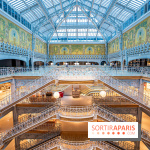


 Samaritaine Paris: the historic store's shopping and dining areas and events
Samaritaine Paris: the historic store's shopping and dining areas and events
La Samaritaine reopened its doors in 2021 after 16 years of renovation. Discover its shopping, beauty and restaurant areas. You'll love strolling around, enjoying the tea rooms and discovering the majestic staircase and window displays. [Read more]
Art Nouveau was at its height when the Paris metro opened 116 years ago. It was Lyon architect Hector Guimard, who also designed the Castel Béranger, who would go on to design some of the metro's entrance doors. Since then, many of them have unfortunately disappeared, but 86 of the 141 are still standing, and can be admired at stations such as Porte Dauphine, Saint-Michel, Cité, Abbesses, Ternes and Pigalle.
There are two types, with or without roofs, but for the one with a fan-shaped canopy, the only one left is the Porte Dauphine entrance, with a"dragonfly design". For the roofless entrances, the word Métropolitain stands between two ornate lampposts, representing the stem of a plant. The orange lamps at the top are surrounded by leaves. The gates were declared historic monuments in 1978, preventing further destruction.



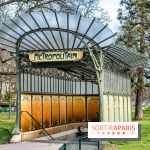 Did you know? This is the last of Hector Guimard's original Type B metro station aediculae.
Did you know? This is the last of Hector Guimard's original Type B metro station aediculae.
Did you know? Hector Guimard's last surviving type B kiosk, nicknamed La Libellule, is located at Porte Dauphine station in Paris. This exceptional Parisian metro entrance is one of the last original vestiges, and we tell you all about it. [Read more]
In 1898, Hector Guimard built the Castel Béranger in the 16th arrondissement. It's a work in its own right, considered the founding work of the movement in France, and a great success in the capital. The building won Guimard the prize for the most beautiful façade in Paris, and isnow a listed historic monument. Although the building is privately owned and not open to the public, the exterior façade, portal and balconies are well worth a visit!


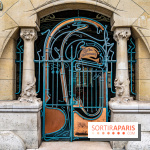
 Did you know that? The Castel Béranger is one of the emblematic buildings of Art Nouveau in Paris
Did you know that? The Castel Béranger is one of the emblematic buildings of Art Nouveau in Paris
Did you know that? The Castel Béranger is an emblematic building of Art Nouveau in Paris. It was designed by the architect Hector Guimard, famous for his Art Nouveau creations, including the famous Parisian subway entrances. Located in the 16th arrondissement of Paris, the Castel Béranger is a true architectural gem, a testimony to the refined aesthetics of the period. [Read more]
This Art Nouveau villa, designed by Hector Guimard, is tucked away in the heart of Le Vésinet in the Yvelines. This first"Guimard-style" villa was built and decorated under the architect's orders, commissioned by the wealthy Mr. Noguès. And if it's nicknamed the Hublotière, it's because of its astonishing porthole-shaped window wells!

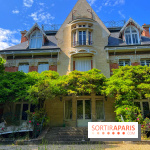

 La Hublotière, Hector Guimard's Art Nouveau villa opens this summer in Le Vésinet (78)
La Hublotière, Hector Guimard's Art Nouveau villa opens this summer in Le Vésinet (78)
Have you heard of La Hublotière? This Art Nouveau villa, designed by Hector Guimard, is hidden away in the heart of Le Vésinet, in the Yvelines department. Exceptionally, it's opening its doors to the public this summer - a golden opportunity to discover our heritage! [Read more]
Designed by architect Jules Lavirotte in 1904, this building is a perfect illustration of the aesthetic principles of the period.


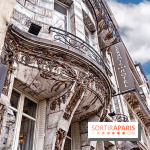
 Did you know that the Céramic Hôtel and its unusual façade are listed as Historic Monuments?
Did you know that the Céramic Hôtel and its unusual façade are listed as Historic Monuments?
The Céramic Hôtel, which today is still a hotel named "Hôtel Elysées Crémac Paris", boasts one of the most original façades in Paris. We tell you the story of this Art Nouveau building designed by architect Jules Aimé Lavirotte, winner of the City of Paris facade competition in 1905. [Read more]



 Did you know? This Belvédère kiosk in the Yvelines is a remnant of the Universal Exhibition.
Did you know? This Belvédère kiosk in the Yvelines is a remnant of the Universal Exhibition.
How about discovering the Kiosque du Belvédère de Châtillon, nestling in the Rosny-sur-Seine forest in the Yvelines department? We tell you all about its history and how to find it. [Read more]



 2024, Year of Hector Guimard: free lectures and events on Art Nouveau in Paris
2024, Year of Hector Guimard: free lectures and events on Art Nouveau in Paris
This year, the city of Paris has decided to highlight the figure of Hector Guimard, a key figure in Art Nouveau in France and in the capital. From January 31, 2024, conferences and free events are planned to celebrate him. [Read more]



 The Galerie Véro-Dodat, a little-known covered passage with the charm of Paris 1826
The Galerie Véro-Dodat, a little-known covered passage with the charm of Paris 1826
Discover the Galerie Véro-Dodat in Paris, a jewel of the XIXᵉ century, one of the most beautiful yet little-known covered passageways, nestled between rue Jean-Jacques Rousseau and rue du Bouloi. We tell you all about its history and what you can find there... [Read more]

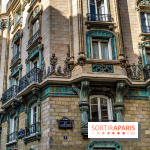

 Did you know? Charles Klein's unusual building, Les Chardons, is a listed and award-winning building.
Did you know? Charles Klein's unusual building, Les Chardons, is a listed and award-winning building.
In the heart of Paris's 16th arrondissement, the Immeuble de Charles Klein stands out for its unique representation of thistles. Built in 1903, this Art Nouveau architectural jewel invites you on a voyage of discovery rich in history and aesthetics. [Read more]

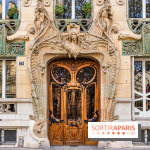

 Immeuble Lavirotte: Art Nouveau jewel on Avenue Rapp in Paris
Immeuble Lavirotte: Art Nouveau jewel on Avenue Rapp in Paris
The Immeuble Lavirotte is a masterpiece of Parisian Art Nouveau, located on Avenue Rapp in the 7th arrondissement. Erected between 1900 and 1901 by Jules Lavirotte, this award-winning building's dreamlike facade is particularly appealing if you're walking near the Eiffel Tower. [Read more]



 Did you know? There are seven Guimard metro kiosks outside Paris. Find out where they are located.
Did you know? There are seven Guimard metro kiosks outside Paris. Find out where they are located.
The capital doesn't have a monopoly on Guimard metro kiosks, as seven of them have surprisingly found their way far from the capital, as part of artistic exchanges. Discover their locations around the world! [Read more]













